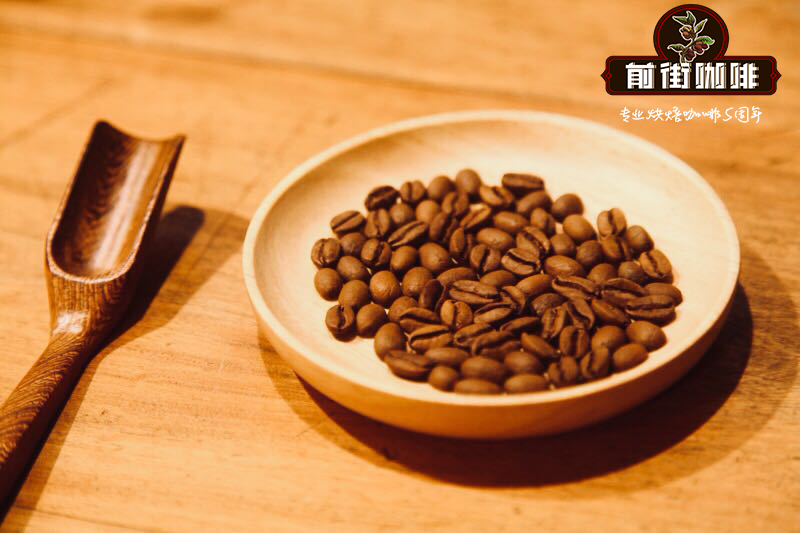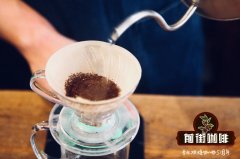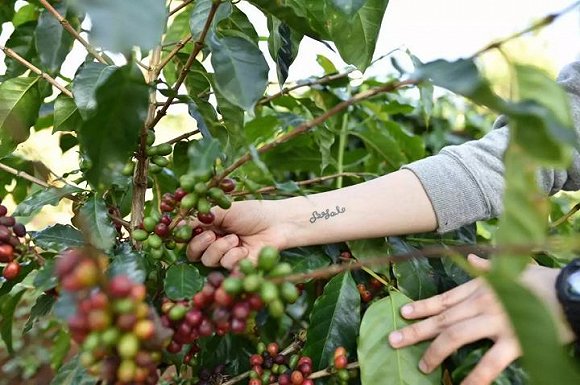Classic Vietnamese Coffee recipe course which is the best brand of Vietnamese coffee beans

Professional coffee knowledge exchange more coffee bean information please follow the coffee workshop (Wechat official account cafe_style)
Vietnamese Coffee _ Vietnamese Coffee Price _ Vietnamese Coffee Brand
The traces of French colonization of Vietnam are not limited to French bread and meat sauce (p â t é) used in Vietnamese sandwiches. Vietnamese coffee, which many people flock to, is another classic.
Serious Eats reported that the French planted a large number of coffee trees in Vietnam in the 19th century. Although it is planted at a low altitude and most of the varieties are robastian coffee beans (Robusta), which are not sour and bitter, it is undeniable that Vietnam is now one of the largest producers of coffee beans in the world.
Influenced by France, locals use a perforated metal drip (phin) to make coffee, which is bittersweet, accompanied by charcoal burning and a deep chocolate aroma. Precisely because of the use of this drip, filter paper is not needed in the coffee making process, so the water used for brewing can absorb more tar and aroma and has a rich taste.
In addition, because there were not enough sources of fresh milk at that time, the French who liked lattes replaced condensed milk and became known as Vietnamese coffee (c à ph ê phin).
Although the French colonization gave birth to Vietnamese coffee, over time, the Vietnamese also developed a variety of unique styles of coffee drinks.
Yogurt a chua c à ph ê
Yogurt was first introduced to Vietnam by the French and has since been used by locals in cuisine, whether it's fresh mango or wine, with yogurt, and coffee is no exception. It looks a little strange, but the rich yogurt and black coffee actually go well, as long as you mix it and you can drink it directly.
Egg coffee (c à ph ê tr coffee ng)
Egg coffee dates back to the 1940s, when there was a shortage of milk and eggs became a convenient substitute. Beat the egg yolk and condensed milk until it is light and fluffy, and then drink it with black coffee, you can also think of it as the Vietnamese version of Tira Misu.
Sinh t coffee c à ph ê
In recent years, Vietnamese coffee has gradually appeared in the ranks of smoothies, with popular local fruit juice shops offering drinks of fresh fruit with Vietnamese coffee, some with yogurt and cashews. In Hanoi, you can try banana avocado coffee smoothie (c à ph ê chu coffee I b shake). In Ho Chi Minh City, Sinh t coffee c à ph ê sapoche with tropical fruit pistachio is also a good choice with a touch of casserole.
▲ is yogurt coffee, egg coffee and coffee smoothie from left to right.
Back to the topic of Vietnamese coffee, how do the local people drink it?
If you want the taste to be softer
Instead of asking for decaffeinated coffee, simply order c à ph ê b coffee c x coffee and add more condensed milk to the coffee.
About sweetness.
If condensed milk is added, the coffee will basically have sweet milk flavor. If you want to simply feel the flavor of coffee, you can order black coffee without condensed milk (c à ph ê coffee en). If you think it's still too sweet, remember to tell the clerk about sugar ng.
Have something to eat first.
Except for the new coffee shops, Vietnamese coffee shops usually don't serve meals, so you can eat and drink like the locals. If it's too late, you can grab a handful of local common sunflower seeds (h / t / h / h
Of course, you don't have to go out or even fly to Vietnam to drink Vietnamese coffee. You can do it at home.
Materials (per person):
2 tablespoons of deep-roasted coffee powder
2 tablespoons condensed milk
Appropriate amount of water
Steps:
If there is no special drip, pour the coffee powder into an insulated container, soak in boiling hot water in the ⅔ cup for four minutes, and then filter with filter paper.
It is best if there is a special leak drip. Boil a cup of water. Open the top of the drip, pour in the coffee powder and cover it. Put the drip on the cup and pour it into the hot water. When the coffee starts to leak, fill it up, then put the lid on and let the coffee drip for four minutes.
Mix in condensed milk. If you want something cold, serve it with ice cubes.
Coffee flavor differences in Indonesia, India and Vietnam, the main coffee producing areas in Asia
Important Notice :
前街咖啡 FrontStreet Coffee has moved to new addredd:
FrontStreet Coffee Address: 315,Donghua East Road,GuangZhou
Tel:020 38364473
- Prev

How about meeting boutique hand-made coffee Vietnamese coffee beans in Vietnam? What kind of coffee beans to buy in Vietnam
Professional coffee knowledge exchange more coffee bean information please follow the coffee workshop (Wechat official account cafe_style) Vietnamese coffee _ Vietnamese coffee price _ Vietnamese coffee brand if you think you can only drink sweet coffee in Vietnam, that's a big mistake! The Workshop, from Ho Chi Minh City, insists on selling only the hand-brewed coffee that coffee addicts love, trying to make coffee beans difficult.
- Next

The road to fine coffee in Yunnan-the tide of fine coffee is changing Pu'er in Yunnan, which is famous for tea.
Professional coffee knowledge exchange more coffee bean information Please follow the coffee workshop (Wechat official account cafe_style) Yunnan Coffee China Yunnan small boutique coffee beans Yunnan coffee bean prices are not only the emerging boutique coffee shops in the city, Yunnan Pu'er coffee industry is also in the transition from the era of instant coffee to the third coffee wave. Starbucks, coffee enthusiast
Related
- Detailed explanation of Jadeite planting Land in Panamanian Jadeite Manor introduction to the grading system of Jadeite competitive bidding, Red bid, Green bid and Rose Summer
- Story of Coffee planting in Brenka region of Costa Rica Stonehenge Manor anaerobic heavy honey treatment of flavor mouth
- What's on the barrel of Blue Mountain Coffee beans?
- Can American coffee also pull flowers? How to use hot American style to pull out a good-looking pattern?
- Can you make a cold extract with coffee beans? What is the right proportion for cold-extracted coffee formula?
- Indonesian PWN Gold Mandrine Coffee Origin Features Flavor How to Chong? Mandolin coffee is American.
- A brief introduction to the flavor characteristics of Brazilian yellow bourbon coffee beans
- What is the effect of different water quality on the flavor of cold-extracted coffee? What kind of water is best for brewing coffee?
- Why do you think of Rose Summer whenever you mention Panamanian coffee?
- Introduction to the characteristics of authentic blue mountain coffee bean producing areas? What is the CIB Coffee Authority in Jamaica?

